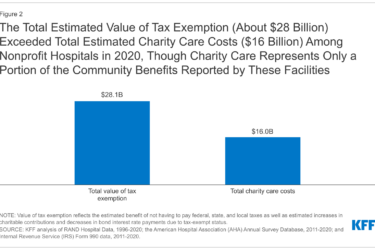 Here’s a resource for health care costs – and a creative journalistic model of crowdsourcing, data collection, mapping, reporting and blogging.
Here’s a resource for health care costs – and a creative journalistic model of crowdsourcing, data collection, mapping, reporting and blogging.
ClearHealthCosts.com was started by former New York Times reporter and editor Jeanne Pinder. She received start-up funding from foundations (Tow-Knight Center for Entrepreneurial Journalism at CUNY and others listed on the website) and ClearHealthCosts now has a team of reporters and data wranglers chipping away at some of the difficult questions that patients need answered: How much is this treatment going to cost me? Can I find a better price?
It’s about shedding light on a health care cost and payment system that, to use Pinder’s word, is “opaque.” Some of what they are doing is specific to a half-dozen cities; other projects are building out nationally.
The data collected by ClearHealthCosts focuses on elective or at least nonemergency procedures such as imaging, dental work, vasectomy, walk-in clinics, screening (mammograms and colonoscopy) and blood tests. Much of the data is crowdsourced, and focused on New York area, including northern New Jersey and other suburbs; the San Francisco and Los Angeles areas; and Houston, Dallas-Fort Worth, Austin and San Antonio in Texas.
A recent grant from the John S. and James L. Knight Foundation via its Prototype Fund will let ClearHealthCosts collaborate with KQED in San Francisco and KPCC/Southern California Public Radio in Los Angeles to crowdsource Califoria prices. Earlier, Pinder’s team did a crowdsourcing partnership with the Brian Lehrer Show at WNYC public radio in which hundreds of women shared mammogram payment information, and their thoughts. It led to a series of blog posts including here and here.
ClearHealthCosts has also created an easy-to-use hospital price map – adapted from data Medicare has now made public – that covers numerous procedures throughout the country, outside the project’s core cities. I can search for noncervical spinal fusion, for instance, in the Washington, D.C./Bethesda area and find prices from seven hospitals ranging from $20,885 to $32,876 – a $12,000 spread. In my community, both the high and low would be considered “good” hospitals. There’s a separate tool based on data hospitals have provided – for those hospitals that have provided it.
Pinder told me she knows all too well that price is only part of what consumers need to know. Cost data doesn’t tell people what they need to know about quality – is that $450 MRI just as good as the $3500 one? How do you know if you should really want the cheapest vasectomy on the block? Or even whether they really need that test or procedure in the first place – like that spinal fusion. Cost isn’t value.
But cost matters.
“There is a revolution going on,” says Pinder. “Consumer are inflamed about this issue. Inflamed.”
“We are bringing transparency to the health care marketplace by telling people what stuff costs and fueling this revolution,” she added. Increasingly, she finds, some doctors are ready to have conversation about costs, too. Price data can create kindling for those conversations.
With millions of people still uninsured and millions more having to put more “skin in the game” via high (and going higher) deductibles in health plans in and out of the ACA exchanges, many Americans are facing significant out-of-pocket health expenses.
These services that ClearHealth is starting with – tests and imaging – aren’t the super big ticket items in U.S. health care. They won’t save hundreds of billions in badly coordinated care for chronic disease or stop egregious hospital errors or address unwanted aggressive care at end of life, for instance. But they can save individuals and families money. And money, as we all know, can be a barrier to care. Seeing how widely prices vary – a hometown microcosm of what the folks at the Dartmouth Atlas keep telling us about – may also help people begin to think about larger issues in health care cost and quality, Pinder says.
The site is a wonderful tool for local reporters to see who is charging what in their own community – and who is putting information in consumers’ hands. The ClearHealthCosts blog also points to some local news organizations across the country that have done stories on prices and data availability in their community that can give you ideas.
One other feature that they’ve done – a New York City map of birth-control pill prices – could be replicated or be a model for a similar specific common drug or medical services.
And an aside: When I looked at this site, guess what ad popped up on my computer? A Washington hospital boasting of its cyberknife.









